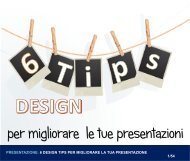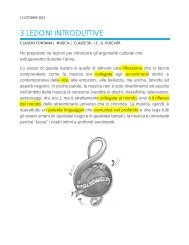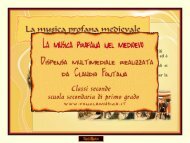underwear-rule-resources---lesson-plan-2015
You also want an ePaper? Increase the reach of your titles
YUMPU automatically turns print PDFs into web optimized ePapers that Google loves.
Running the <strong>lesson</strong><br />
Time required 60 minutes<br />
Open the Powerpoint presentation<br />
Before you start<br />
Take a few moments to ask the pupils to<br />
establish some ground <strong>rule</strong>s for the <strong>lesson</strong>.<br />
These may include things like only one<br />
person talking at once, or not asking<br />
personal questions.<br />
Slide 1: The Underwear Rule<br />
(10 minutes)<br />
1. Introduce the Underwear Rule to the class<br />
– anything that is covered by <strong>underwear</strong><br />
is a private part of our body and check<br />
that all pupils understand what the word<br />
‘private’ means.<br />
2. Show the Underwear Rule poster or image.<br />
3. Show children the PANTS acrostic to<br />
explain the Underwear Rule. Use the PANTS<br />
posters or show our web <strong>resources</strong> on the<br />
whiteboard.<br />
4. Take each sentence in turn and explain<br />
what each letter of PANTS stands for.<br />
Check that the children understand each<br />
phrase. Encourage them to say it out loud<br />
as a chant, if they are familiar with this<br />
learning method, and depending on their<br />
age. This might be harder for younger or<br />
lower ability students.<br />
Slide 2: Design your own pants<br />
(10 minutes)<br />
1. Provide a variety of arts materials so that<br />
the class can design their own pants.<br />
This can include sheets of plain paper,<br />
wrapping paper, tissue paper, colouring<br />
pencils, pens and paints.<br />
2. Task one: working in pairs/small groups<br />
ask children to design and make their<br />
own pants using the pants templates<br />
or by designing their own pants shapes.<br />
Each pair can use one of the PANTS letters<br />
so that there are multiple complete versions<br />
of PANTS to display or use later in task two.<br />
3. Display the pants in the classroom as part<br />
of the ongoing objective to reinforce the<br />
Underwear Rule.<br />
Slide 3: Labelling parts of the body<br />
(10 minutes)<br />
1. Task two: create a large representation of<br />
the human body so that the children can<br />
help to label key body parts and identify<br />
what area is covered by pants (use the<br />
pants from task one for this).<br />
Options include:<br />
• Use the body parts puzzle.<br />
• Have a teacher draw a body shape on<br />
the whiteboard (or a large piece of paper),<br />
or ask for a child to volunteer to do this.<br />
2. Ask the children to help you label each<br />
part of the body. And use this activity<br />
to lead on to discussing the appropriate<br />
language we may use to describe parts<br />
of our body, as per the agreed list (see<br />
additional <strong>resources</strong>). The DfEE Sex and<br />
Relationship Education Guidance 2000<br />
advises that ‘all children are able to name<br />
parts of the body and describe how their<br />
bodies work’. In addition, the DfE Science<br />
Programme of Study Key Stages 1 and<br />
2 National Curriculum in England, Year<br />
1 programme of study, Animals, including<br />
humans asks that pupils ‘identify, name,<br />
draw and label the basic parts of the<br />
human body.’ Introduce this vocabulary<br />
in measured terms when explaining that<br />
the pants region shouldn’t be touched.<br />
Say that there are special circumstances<br />
when touching is OK, which you will<br />
cover next.<br />
2





